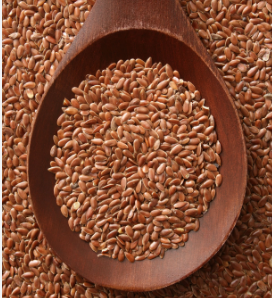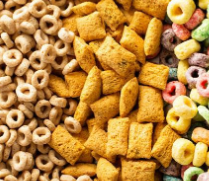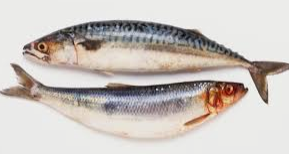Heart-Healthy and Unhealthy Foods: A Guide to Cardiovascular Wellness
Discover the principles of heart-healthy nutrition and learn about foods that promote heart health and those to avoid. Explore examples of heart-healthy meals and meals heart patients should steer clear of.
Heart Healthy and unhealthy food
Discover the principles of heart-healthy nutrition and learn about foods that promote heart health and those to avoid.
Explore examples of heart-healthy meals and meals heart patients should steer clear of.
Maintaining a heart-healthy diet is essential for overall cardiovascular health. Here’s a list of foods that are generally considered heart-healthy and those that are not:
Heart-Healthy Foods:
Fruits and Vegetables as Heart-Healthy Foods: These are rich in vitamins, minerals, and antioxidants that help reduce inflammation and lower the risk of heart disease.
Whole Grains Heart-Healthy Foods: Foods like whole wheat, oats, quinoa, and brown rice are high in fiber and can help lower cholesterol levels.

Oats and quinoa
Lean Proteins as Heart-Healthy Foods:
Skinless poultry, fish (especially fatty fish like salmon and mackerel), and legumes are excellent sources of protein without excessive saturated fat.
Nuts and Seeds as Heart-Healthy Foods:
Almonds, walnuts, flaxseeds, and chia seeds are good sources of healthy fats and can help reduce bad cholesterol.

Chia seeds

walnuts
Olive Oil as Heart-Healthy Foods: Extra virgin olive oil is rich in monounsaturated fats, which can improve heart health.
Low-Fat Dairy as Heart-Healthy Foods: Opt for low-fat or fat-free dairy products like yogurt and milk to reduce saturated fat intake.
Lean Meats as Heart-Healthy Foods: If you consume red meat, choose lean cuts and trim visible fat to reduce saturated fat content.
Foods High in Omega-3 Fatty Acids as Heart-Healthy Foods: These can be found in fatty fish, flaxseeds, and walnuts and help reduce inflammation and improve heart health.

Fiber-Rich Foods as Heart-Healthy Foods: Foods like beans, lentils, and whole grains are high in soluble fiber, which can help lower cholesterol levels.
Green Tea as Heart-Healthy Foods: It contains antioxidants that can contribute to better heart health.

Unhealthy Foods for the Heart:
Saturated and Trans Fats: These fats, found in fried foods, processed snacks, and many baked goods, can raise bad cholesterol levels and increase the risk of heart disease.
Heart health is a matter of paramount importance. Cardiovascular diseases are the leading cause of death worldwide, but the good news is that many of these conditions can be prevented or managed through a heart-healthy diet. Understanding which foods promote heart health and which ones are detrimental is a crucial step in maintaining a healthy heart. In this article, we will explore the principles of heart-healthy nutrition and identify the foods to embrace and avoid for optimal cardiovascular wellness.
Heart-Healthy Foods
- Fruits and Vegetables: Packed with essential vitamins, minerals, and antioxidants, fruits and vegetables are the cornerstone of a heart-healthy diet. They help reduce inflammation and support overall cardiovascular health.
- Whole Grains: Whole grains such as oats, quinoa, brown rice, and whole wheat provide ample fiber, which can lower cholesterol levels and reduce the risk of heart disease.
- Lean Proteins: Opt for lean protein sources like skinless poultry, fish (especially fatty fish like salmon and mackerel), and legumes. These options offer high-quality protein without excessive saturated fat.
- Nuts and Seeds: Almonds, walnuts, flaxseeds, and chia seeds are rich in healthy fats and can lower bad cholesterol levels. They also provide essential nutrients and promote heart health.
- Olive Oil: Extra virgin olive oil is a source of heart-healthy monounsaturated fats. Incorporating it into your diet can contribute to improved cardiovascular well-being.
- Low-Fat Dairy: Choose low-fat or fat-free dairy products like yogurt and milk to minimize saturated fat intake while still getting essential nutrients.
- Lean Meats: If you consume red meat, select lean cuts and trim visible fat to reduce saturated fat content.
- Omega-3 Fatty Acids: Fatty fish, flaxseeds, and walnuts are high in omega-3 fatty acids, which can reduce inflammation and support heart health.
- Fiber-Rich Foods: Legumes, beans, and whole grains are excellent sources of soluble fiber, which can lower cholesterol levels and reduce the risk of heart disease.
- Green Tea: Green tea contains antioxidants that can have a positive impact on heart health.
Heart-Unhealthy Foods
- Saturated and Trans Fats: Foods high in saturated and trans fats, such as fried foods, processed snacks, and many baked goods, can increase bad cholesterol levels and elevate the risk of heart disease. It is important to limit the consumption of these foods.

- Excessive Sodium (Salt): Consuming too much salt can lead to high blood pressure, a major risk factor for heart disease. Processed foods, fast food, and restaurant meals are often high in sodium.

- Sugary Foods and Beverages: High sugar consumption is linked to obesity, diabetes, and heart disease. Reducing the intake of sugary foods and beverages is essential for heart health.

- Red Meat and Processed Meats: Excessive consumption of red meat, especially processed meats like sausages and bacon, is associated with an increased risk of heart disease. Limiting their intake is wise.

- Refined Grains: Refined grains, such as white bread and white rice, lack the fiber and nutrients found in whole grains. They can lead to spikes in blood sugar and should be consumed in moderation.

- Alcohol: Excessive alcohol consumption can lead to high blood pressure, heart failure, and other cardiovascular issues. If you choose to drink alcohol, do so in moderation.
In conclusion, a heart-healthy diet is all about making mindful choices. Prioritizing whole, unprocessed foods and reducing the intake of saturated fats, salt, sugar, and processed items can significantly improve cardiovascular wellness. By understanding the impact of different foods on your heart and making informed choices, you can take a proactive step toward a healthier and stronger heart. Remember that consulting with a healthcare professional or registered dietitian can provide personalized guidance to help you achieve your specific heart health goals.
Examples of heart healthy meals
Heart-healthy meals focus on incorporating nutrient-dense foods that support cardiovascular health while limiting saturated and trans fats, sodium, and added sugars. Here are some examples of heart-healthy meals:
Grilled Salmon with Quinoa and Steamed Vegetables:
- Grilled salmon, rich in omega-3 fatty acids.
- Quinoa, a whole grain packed with fiber.
- Steamed broccoli and carrots, providing vitamins and minerals.
Mediterranean Chickpea Salad:
- Chickpeas, a great source of protein and fiber.
- Fresh tomatoes, cucumbers, and red onion.
- Kalamata olives and feta cheese for flavor.
- Drizzled with olive oil and lemon juice.
Oatmeal with Berries and Almonds:
- Steel-cut oats, high in soluble fiber.
- Fresh or frozen berries for antioxidants.
- Chopped almonds for added texture and healthy fats.
Grilled Chicken Salad with Balsamic Vinaigrette:
- Grilled skinless chicken breast.
- Mixed greens, bell peppers, cherry tomatoes, and cucumber.
- Homemade balsamic vinaigrette with olive oil and vinegar.
Veggie Stir-Fry with Tofu:
- Tofu, a plant-based protein.
- A variety of colorful vegetables like bell peppers, broccoli, and snap peas.
- Brown rice or quinoa as a base.
Turkey and Avocado Wrap:
- Sliced lean turkey breast.
- Sliced avocado for healthy fats.
- Whole-grain wrap or whole-grain bread.
- A side of mixed greens.
Homemade Lentil Soup:
- Lentils, packed with fiber and protein.
- Vegetables like carrots, celery, and onions.
- Low-sodium vegetable broth.
- Seasoned with herbs and spices.
Baked Sweet Potato with Black Beans and Salsa:
- Baked sweet potato, a good source of fiber and vitamins.
- Black beans for plant-based protein.
- Salsa for flavor without added sugars or unhealthy fats.
Greek Yogurt Parfait:
- Greek yogurt, high in protein.
- Fresh berries for antioxidants.
- Honey or a drizzle of maple syrup for sweetness.
- Granola for crunch (choose one with minimal added sugars).
Grilled Veggie and Quinoa Bowl:
- Grilled zucchini, eggplant, and red bell pepper.
- Quinoa as a base.
- Drizzled with a tahini or olive oil-based sauce.
- Sprinkle with chopped fresh herbs like parsley.
These examples showcase the diversity and deliciousness of heart-healthy meals. Remember to focus on whole, minimally processed foods, and use herbs and spices for flavor instead of excessive salt. Tailor your meals to your preferences while keeping the principles of heart-healthy eating in mind.
Baked or Grilled White Fish with Salsa and Brown Rice:
- White fish such as tilapia or cod, which is low in saturated fats.
- Homemade salsa with tomatoes, onions, cilantro, and lime.
- Brown rice as a nutritious side.
Spinach and Strawberry Salad with Grilled Chicken:
- Grilled chicken breast, a lean source of protein.
- Fresh spinach and strawberries.
- Sliced almonds for crunch.
- Light vinaigrette dressing.
Vegetable and Chickpea Curry:
- Chickpeas for protein and fiber.
- A variety of vegetables like bell peppers, spinach, and cauliflower.
- Tomato-based curry sauce with spices.
- Serve with brown rice or whole-grain naan.
Egg and Vegetable Omelette:
- Egg whites or egg substitute.
- A mix of diced vegetables like bell peppers, onions, and spinach.
- Sprinkle of low-fat cheese.
Peanut Butter and Banana Whole-Grain Sandwich:
- Whole-grain bread.
- Natural peanut butter (no added sugars or trans fats).
- Sliced bananas for added nutrition.
Tomato and Basil Whole-Grain Pasta:
- Whole-grain pasta.
- Fresh tomato and basil sauce with garlic.
- A sprinkle of Parmesan cheese (in moderation).
Tuna Salad with Avocado and Whole-Grain Crackers:
- Canned tuna in water.
- Mashed avocado for creaminess.
- Serve with whole-grain crackers or on whole-grain bread.
Roasted Vegetable and Lentil Bowl:
- Roasted mixed vegetables like carrots, sweet potatoes, and Brussels sprouts.
- Cooked green or brown lentils.
- Drizzle with a balsamic reduction.
Hummus and Vegetable Platter:
- Homemade or store-bought hummus.
- Sliced cucumbers, bell peppers, cherry tomatoes, and baby carrots for dipping.
Baked Chicken with Rosemary and Garlic Mashed Cauliflower:
- Baked chicken breast seasoned with rosemary and garlic.
- Mashed cauliflower as a lower-carb alternative to mashed potatoes.
These meals continue to prioritize whole foods, lean proteins, and plenty of fruits and vegetables. Remember to stay hydrated with water and to monitor portion sizes to maintain a balanced and heart-healthy diet.
Example of unhealthy heart meals
Unhealthy heart meals are typically high in saturated and trans fats, sodium, added sugars, and refined carbohydrates, which can contribute to heart disease and other health issues. Here are some examples of unhealthy heart meals:
Fast Food Combo Meal:
- A fast-food burger with cheese, bacon, and a large serving of French fries.
- A sugary soda or milkshake.
- High in saturated fats, sodium, and added sugars.

Deep-Fried Foods:
- Deep-fried chicken, french fries, or onion rings.
- These foods are loaded with unhealthy trans fats and can raise bad cholesterol levels.

Processed Meat and Cheese Sandwich:
- A sandwich with processed meats like salami, bologna, or hot dogs.
- Processed cheese slices.
- White bread.
- High in saturated fats, sodium, and often contain preservatives.
Frozen TV Dinners:
- Prepackaged frozen dinners that are often high in sodium, trans fats, and added sugars.
- Examples include frozen pizza, fried chicken meals, and some microwaveable pasta dishes.

Instant Ramen Noodles:
- Highly processed ramen noodles with a high-sodium seasoning packet.
- These noodles are typically low in nutrition and high in sodium.

Bacon, Egg, and Cheese Breakfast Sandwich:
- A sandwich with bacon, fried eggs, cheese, and often served on a white bread roll.
- Loaded with saturated fat and cholesterol.

Doughnuts and Pastries:
- Sugary doughnuts, croissants, and pastries.
- These are high in added sugars and unhealthy trans fats.

Sugary Cereals:
- Breakfast cereals with high added sugar content.
- They can lead to weight gain and contribute to heart disease.

Sausage and Biscuits with Gravy:
- Sausage links and biscuits smothered in high-fat, high-sodium gravy.
- A very heavy and unhealthy breakfast choice.

Soda and Sugary Snacks:
- Sugary sodas, energy drinks, and snacks like candy, cookies, and sweetened yogurt.
- High in added sugars, which can lead to obesity and heart problems.

These unhealthy meal examples are typically high in empty calories, unhealthy fats, and sodium. Consuming such meals regularly can increase the risk of heart disease and other health conditions. It’s important to limit or avoid these choices in favor of heart-healthy alternatives.
References
American Heart Association (AHA): The AHA offers a wealth of information on heart-healthy diets and guidelines. You can find articles and resources on their official website at www.heart.org.
National Heart, Lung, and Blood Institute (NHLBI): Part of the National Institutes of Health, the NHLBI provides research-based guidance on heart health, including dietary recommendations. Their website is www.nhlbi.nih.gov.




**mind vault**
mind vault is a premium cognitive support formula created for adults 45+. It’s thoughtfully designed to help maintain clear thinking
**breathe**
breathe is a plant-powered tincture crafted to promote lung performance and enhance your breathing quality.